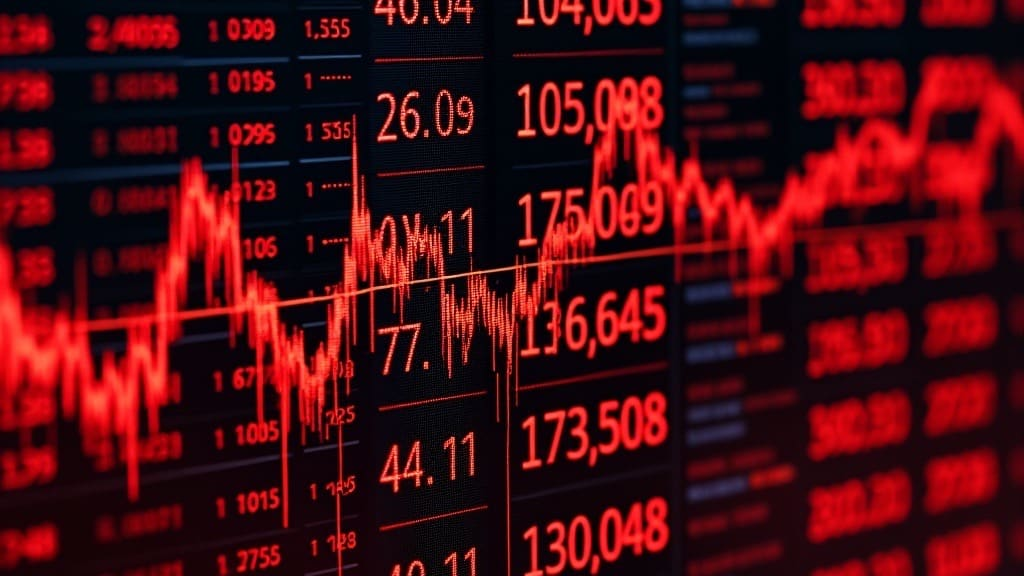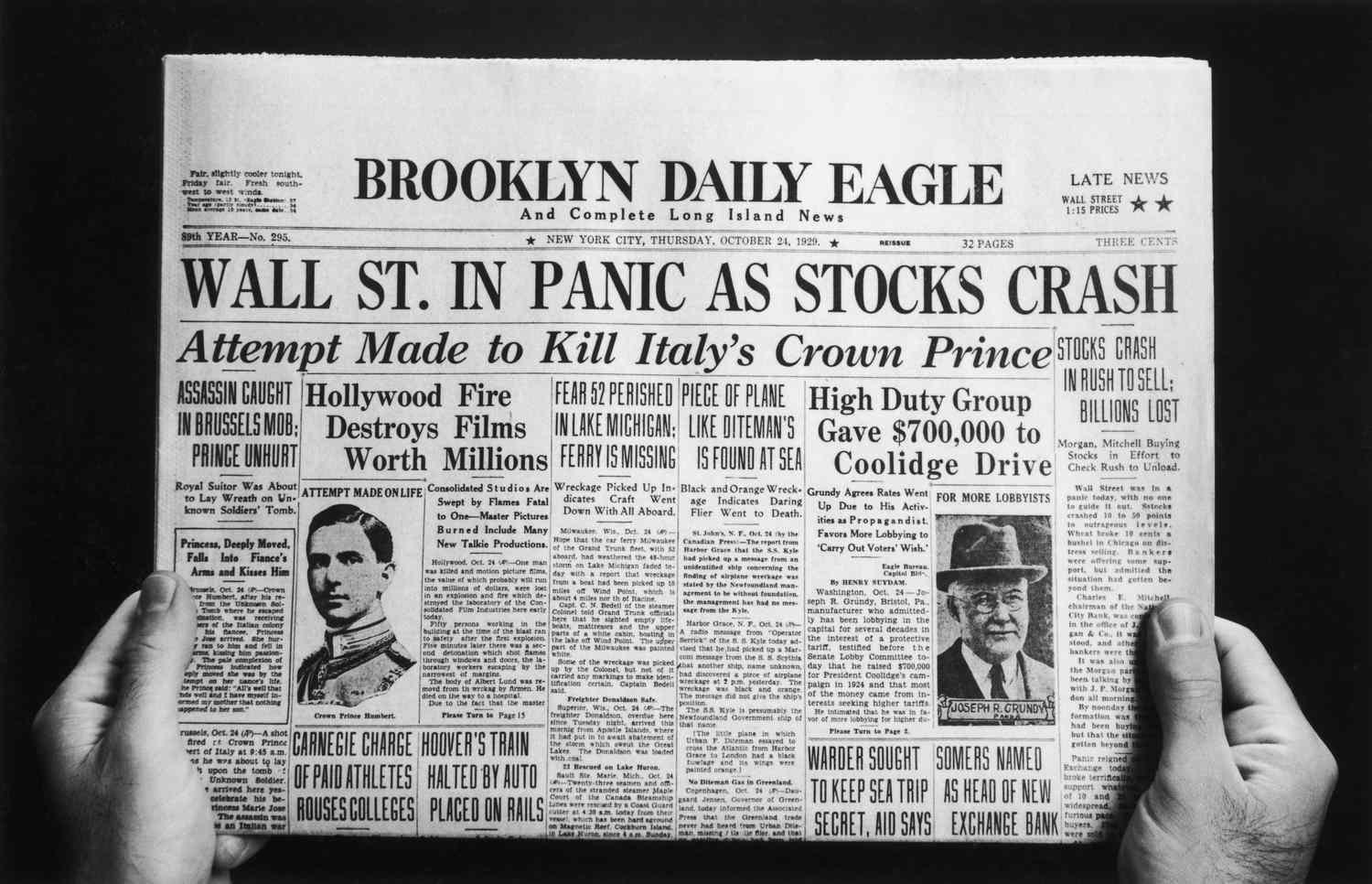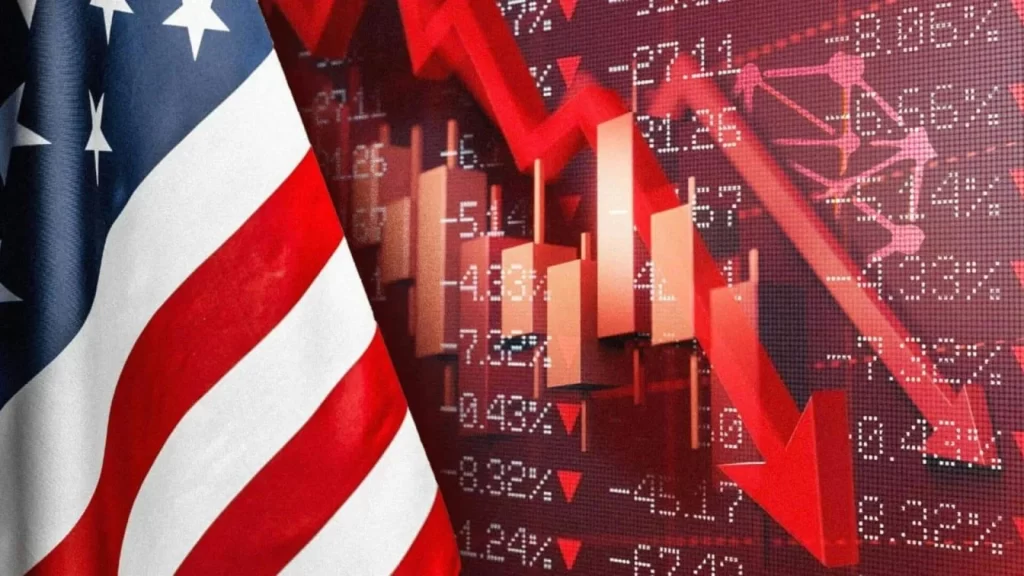Worst Daily Stock Market and Crypto Crashes in History
Millions has been wiped off the traditional markets and crypto markets in the last few days, but we have seen this happen before. Curious about the worst daily stock market and crypto crashes in history? This article details catastrophic one-day market drops, from Black Monday in 1987 to the Bitcoin crash in 2017, and examines their causes and impacts.
Key Takeaways
- Black Monday in 1987 marked the largest one-day stock market decline, driven by investor anxiety and exacerbated by automated trading systems.
- The Flash Crash of 2010, characterized by a rapid drop in the Dow Jones, highlighted the vulnerabilities of automated trading and led to the implementation of regulatory measures like circuit breakers.
- The COVID-19 market crash in March 2020 underscored the interconnectedness of global markets, resulting in significant volatility and economic disruptions, affecting both stocks and cryptocurrency.
Black Monday: October 19, 1987

Black Monday, the stock market crash of 1987, was a day that will forever be etched in the annals of financial history. On October 19, 1987, the Dow Jones Industrial Average plummeted by an astonishing 22.6%, marking the largest one-day decline in history. This catastrophic event resulted in a loss of over $500 billion in market value, sending shockwaves through the global financial markets and serving as a reminder of the worst stock market crash and other major stock market crashes.
What set Black Monday apart from previous stock market crashes was the unprecedented speed and the interconnectedness of global markets. The crash was not confined to Wall Street alone; it reverberated across continents, highlighting the fragile interconnectedness of the global financial system. The rapidity and intensity of the sell-off underscored the vulnerabilities inherent in modern trading systems.
Causes and Impact
The lead-up to Black Monday was marked by investor anxiety over high stock valuations and economic uncertainties. Geopolitical tensions and fears of rising interest rates created a volatile atmosphere, further exacerbated by an overvalued dollar and a speculative bubble. As panic began in Asian markets, it quickly spread westward, amplifying the rush to sell.
A critical factor was the introduction of newly automatic trading systems that led to a rapid sell-off. These automated systems, intended to manage risk, instead amplified market risks, triggering a cascade of sell orders that overwhelmed the market.
The aftermath highlighted the need for improved risk management tools that could genuinely mitigate, rather than amplify, market volatility.
The Flash Crash: May 6, 2010

The Flash Crash of May 6, 2010, was a startling event that unfolded in mere minutes. At 2:32 PM EDT, the Dow Jones experienced its second-largest point drop in history, plummeting nearly 1000 points within approximately 36 minutes. Concerns over the Greek debt crisis and a UK general election had already created a tense market environment.
Despite its dramatic nature, the long-term impact on the U.S. economy was minimal. The market’s rapid collapse and subsequent recovery within the same day underscored the fragility of modern trading systems and the profound impact of automated trading on market stability.
Contributing Factors
A significant automated sell order, coupled with high-frequency trading and a thin order book, were major contributors to the Flash Crash. High-frequency trading, known for its potential to increase market volatility, played a pivotal role as rapid trades created sudden price movements, triggering automatic stop-loss orders and exacerbating the sell-off.
The flash crash highlighted the vulnerabilities in trading systems where automated algorithms could lead to widespread market disruptions. The conditions were ripe for a financial crisis, with the automated sell order acting as a catalyst that exposed the weaknesses in the market’s infrastructure.
Market Response
In the aftermath of the Flash Crash, regulatory bodies implemented new trading regulations, including circuit breakers, to prevent similar occurrences in the future. These circuit breakers were designed to pause trading temporarily, allowing time for market participants to assess the situation and restore order.
During the Flash Crash, trading was paused for five seconds on the E-Mini S&P 500 futures, which helped stabilize the market. The incident underscored the necessity for robust trading mechanisms and enhanced safeguards to prevent market volatility from spiraling into a full-blown financial crash.
COVID-19 Market Crash: March 16, 2020

The COVID-19 pandemic brought the world to a standstill, and the stock markets were no exception. On March 16, 2020, the Dow Jones recorded the largest single-day drop in its history, declining by nearly 3,000 points. This dramatic decline was part of a global trend, reflecting widespread panic as the pandemic’s severity became evident.
The crash highlighted the vulnerability of global markets to external shocks. Investor confidence plummeted, causing sharp increases in market volatility and uncertainty. The COVID-19 market crash was a stark reminder of how interconnected and susceptible global financial crisis systems are to unforeseen events.
Global Economic Impact
The economic impact of the COVID-19 crash was profound, leading to significant supply chain disruptions across the world economy. Production and distribution in multiple sectors were affected, causing ripple effects throughout the global economy. Investor confidence took a nosedive, resulting in heightened market volatility and uncertainty.
The crash also had a significant impact on the cryptocurrency market, with a decline in overall market value and increased regulatory scrutiny. This period of economic turmoil underscored the need for robust financial systems capable of withstanding such unprecedented shocks.
Bitcoin Crash: December 22, 2017

The Bitcoin crash on December 22, 2017, was a dramatic event that saw the cryptocurrency’s value plummet by nearly 30% in just one day. Bitcoin had reached a peak price of nearly $20,000 earlier that month, driven by speculative investments and media hype.
This drastic price drop significantly affected investor confidence, leading to increased scrutiny and volatility in the cryptocurrency market. The crash underscored the speculative nature of Bitcoin trading and foreshadowed regulatory discussions in the cryptocurrency sphere.
Speculative Bubble
The surge in Bitcoin’s price leading up to the crash was largely fueled by a speculative bubble. Retail investors, driven by media hype and the promise of rapid growth, poured money into the cryptocurrency, inflating its value. This speculative investment frenzy created a precarious market situation.
When the bubble burst, it revealed the vulnerabilities inherent in such speculative trading. The rapid rise and subsequent fall of Bitcoin’s value highlighted the dangers of investing based on hype rather than fundamental financial metrics.
Market Aftermath
In the wake of the crash, Bitcoin’s value fell approximately 45% from its peak. This dramatic decline served as a stark reminder of the volatility and risks associated with cryptocurrency investments. The broader cryptocurrency market also experienced significant downturns, impacting investor sentiment and market stability.
The aftermath of the Bitcoin crash led to increased regulatory scrutiny and efforts to create a more stable and transparent trading environment. These measures were aimed at protecting investors and ensuring the long-term viability of the cryptocurrency market.
Ethereum Flash Crash: June 21, 2017

The Ethereum flash crash of June 21, 2017, was a striking example of market volatility in the cryptocurrency space. Within seconds, the price of Ethereum plummeted from approximately $319 to just 10 cents. This dramatic drop was triggered by a large market sell order executed on the GDAX trading platform.
The event highlighted the vulnerabilities in cryptocurrency trading platforms and the potential for rapid, significant price fluctuations. It served as a wake-up call for the need to improve trading mechanisms and safeguard against such dramatic declines.
High-Frequency Trading Impact
High-frequency trading and a thin order book contributed significantly to the rapid price decline during the Ethereum flash crash. Automated trading systems executed large volumes of trades in a very short period, overwhelming the market and causing prices to plummet.
This incident underscored the risks associated with high-frequency trading in financial markets. It highlighted the need for more robust trading systems capable of handling large orders without causing significant market disruptions.
Recovery and Lessons Learned
In the aftermath of the Ethereum flash crash, new trading rules and circuit breakers were implemented to enhance market stability. These measures aimed to prevent similar incidents in the future and restore investor confidence in the cryptocurrency market.
The crash also led to increased regulatory scrutiny, emphasizing the importance of robust trading systems and effective risk management practices. These lessons have been instrumental in shaping the future of cryptocurrency trading platforms.
The Great Depression: October 29, 1929

The Great Depression, marked by Black Tuesday on October 29, 1929, was a catastrophic event in financial history. On this day, the Dow Jones lost over 12% in just one day. This followed a significant decline of 21% on October 24, 1929, known as Black Thursday.
The Wall Street crash of 1929 had severe and long-lasting impacts on the global economy. It marked the beginning of the Great Depression, a period of unprecedented economic hardship and financial instability.
Causes of the 1929 Crash
The 1929 crash was precipitated by speculative investments and easy access to loans. Between 1921 and September 1929, stock prices grew significantly due to unfettered speculation and a booming economy. However, this growth was unsustainable, leading to a precarious market situation.
When the market finally crashed, it was a result of these speculative investments and the widespread use of borrowed money to purchase stocks. The stock market crash occurs exposed the inherent risks in such speculative trading practices and the dangers of an overheated market.
Long-Term Consequences
The long-term consequences of the 1929 crash were profound. The Dow Jones did not regain its pre-crash value until November 1954, highlighting the prolonged recovery period. This period saw significant economic and social upheaval, with widespread unemployment and financial instability.
The lessons learned from the Great Depression have shaped financial policies and regulatory frameworks to prevent similar occurrences in the future. The crash underscored the need for robust financial institutions and effective risk management practices.
The Dot-Com Bubble Burst: April 14, 2000
The burst of the dot-com bubble on April 14, 2000, was a significant event in stock market history. On this day, the Nasdaq Composite fell 9.67%, signaling the end of a period of high speculation in internet companies. This crash had severe repercussions for the technology sector, with many companies facing bankruptcies and layoffs.
The overvaluation of tech stocks was driven by excessive optimism and speculative investments in internet companies. Many of these companies had little to no revenue, reflecting a risky investment environment.
Overvaluation of Tech Stocks
The surge of investment in tech startups during the 1990s was driven by the rapid growth of the Internet and digital technology. Many of these startups had little to no revenue, but their stock prices were inflated based on expected future profits rather than current financial health. This led to a bubble that eventually burst when investors started selling overvalued companies.
The dot-com bubble was characterized by a disregard for traditional financial metrics, leading to inflated stock prices. When the bubble burst, it revealed the unsustainable nature of many tech startups and the risks associated with speculative investments.
Impact on Technology Sector
The burst of the dot-com bubble wiped out over $5 trillion in market value. The NASDAQ Composite Index experienced a dramatic 75% decline from its peak between March 2000 and October 2002. This crash led to significant bankruptcies and layoffs in the technology sector, highlighting the unsustainable business models prevalent during the boom.
The aftermath of the dot-com bubble led to a marked shift in investor sentiment and a more cautious approach to investing in tech stocks. The crash underscored the importance of sustainable business models and the risks associated with speculative investments during a market downturn.
Summary
The history of stock market and cryptocurrency crashes serves as a stark reminder of the volatility and unpredictability inherent in financial markets. From the catastrophic Black Monday of 1987 to the rapid descent witnessed during the Flash Crash of 2010, each event has left a profound impact on the global economy and investor sentiment. These crashes have not only resulted in significant financial losses but have also paved the way for regulatory reforms aimed at preventing future occurrences.
The lessons learned from these notable crashes emphasize the importance of robust trading systems, effective risk management practices, and regulatory oversight. By understanding the causes and consequences of these historical market downturns, investors and policymakers can better navigate the complexities of the financial landscape.
Many traders predicted the most recent stock market crash. Perhaps the world markets needed a full reset. Warren Buffets Investment Company, Berkshire Hathaway off-loaded $158 billion of stocks over the last 2 years and its cash pile has tripled to over $320 billion. Perhaps we need to keep an eye on when they re-enter the market.
As we move forward, the resilience and adaptability of financial markets will continue to be tested, but the knowledge gained from this latest experience as well as previous crashes will serve as a valuable guide.
Frequently Asked Questions
What caused the Black Monday crash of 1987?
The Black Monday crash of 1987 was primarily driven by inflated stock valuations, economic uncertainties, geopolitical tensions, and the rapid sell-off triggered by automated trading systems. This perfect storm of factors resulted in a significant market downturn.
How did high-frequency trading contribute to the Flash Crash of 2010?
High-frequency trading significantly contributed to the Flash Crash of 2010 by amplifying market volatility and triggering rapid price declines through automated sell orders in a thin order book. This combination created an environment for sudden and steep market movements.
What was the impact of the COVID-19 market crash on global economies?
The COVID-19 market crash profoundly impacted global economies by causing supply chain disruptions, declining investor confidence, and increasing market volatility. This turmoil prompted heightened regulatory scrutiny, particularly in the cryptocurrency market.
Why did Bitcoin’s value plummet on December 22, 2017?
Bitcoin’s value plummeted on December 22, 2017, primarily due to the collapse of a speculative bubble fueled by intense retail investor interest and media hype, which eroded confidence in the market. This event highlights the volatility inherent in cryptocurrency investments.
What were the long-term consequences of the Great Depression’s stock market crash?
The long-term consequences of the Great Depression’s stock market crash included a prolonged economic recovery that lasted until 1954, along with significant changes in financial policies and regulations to mitigate the risk of future crashes. These reforms aimed to promote stability and restore public confidence in the financial system.

